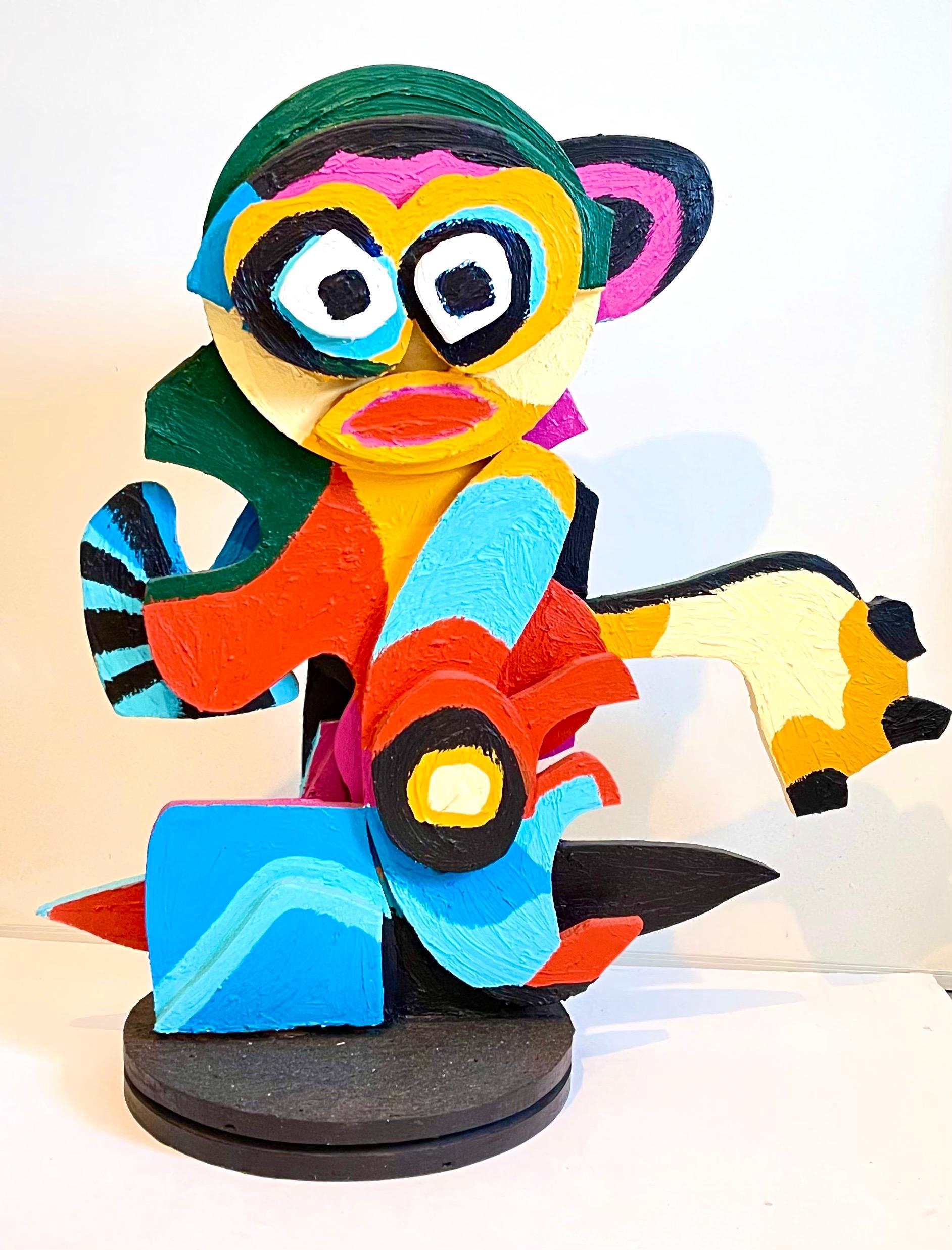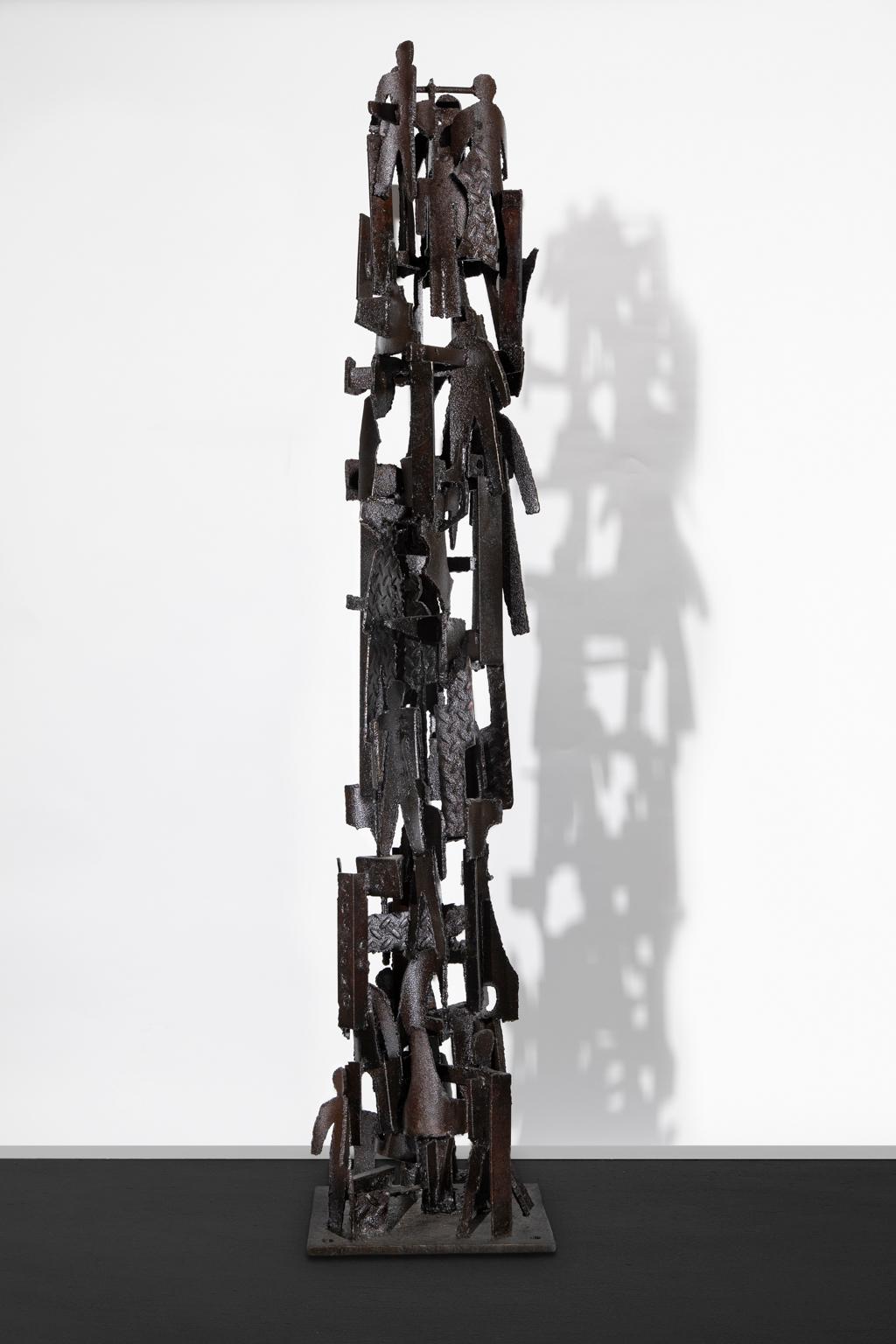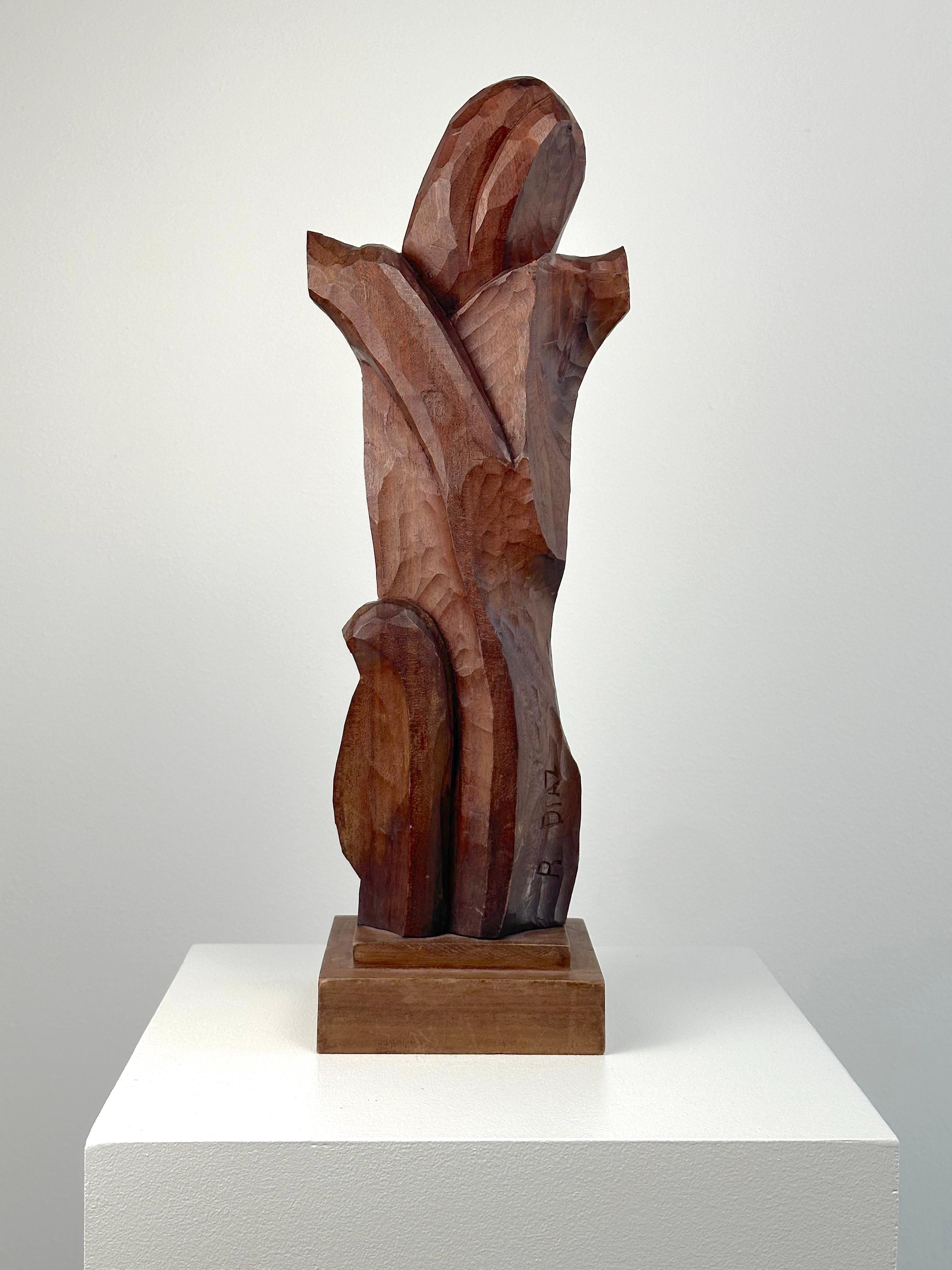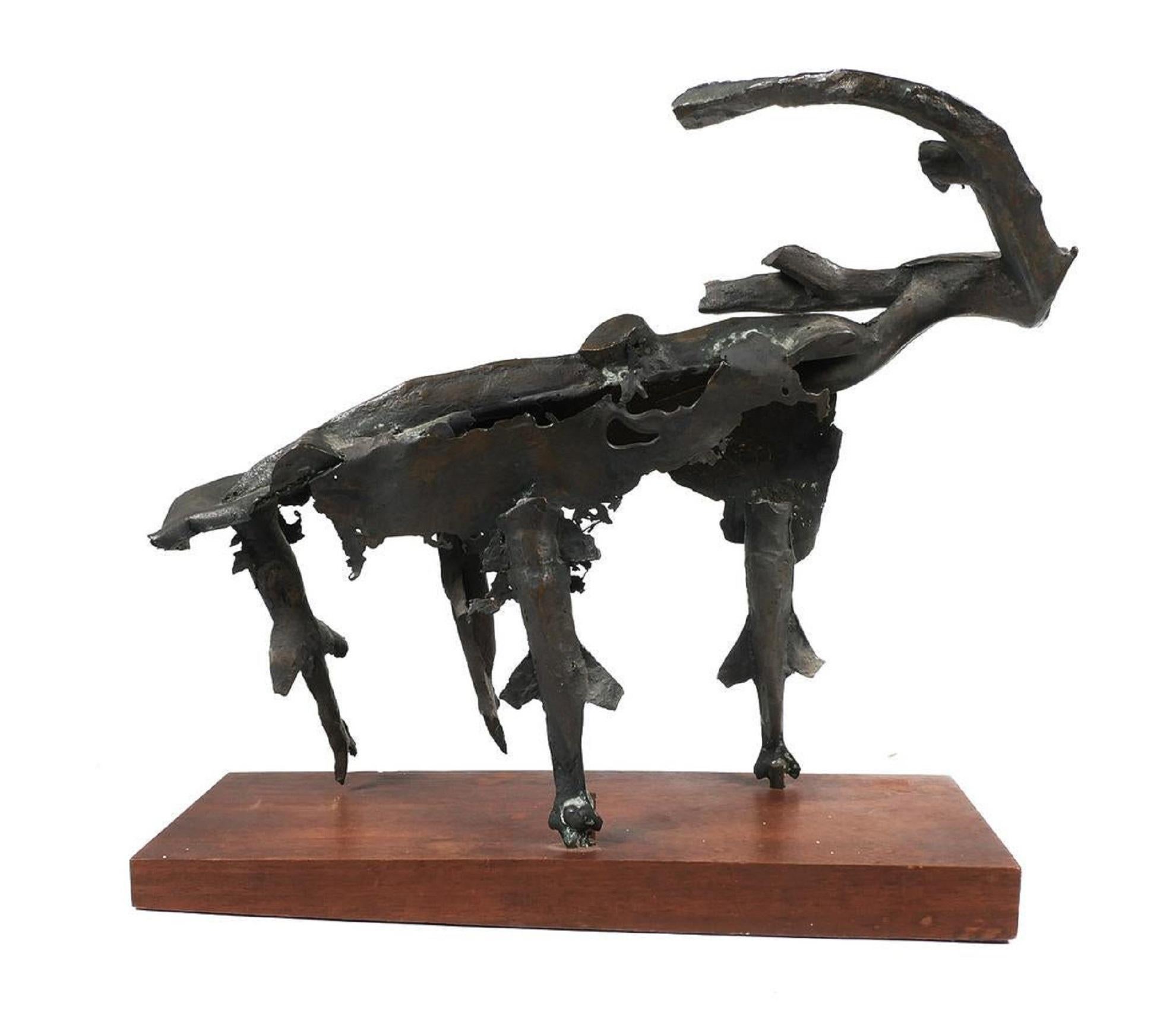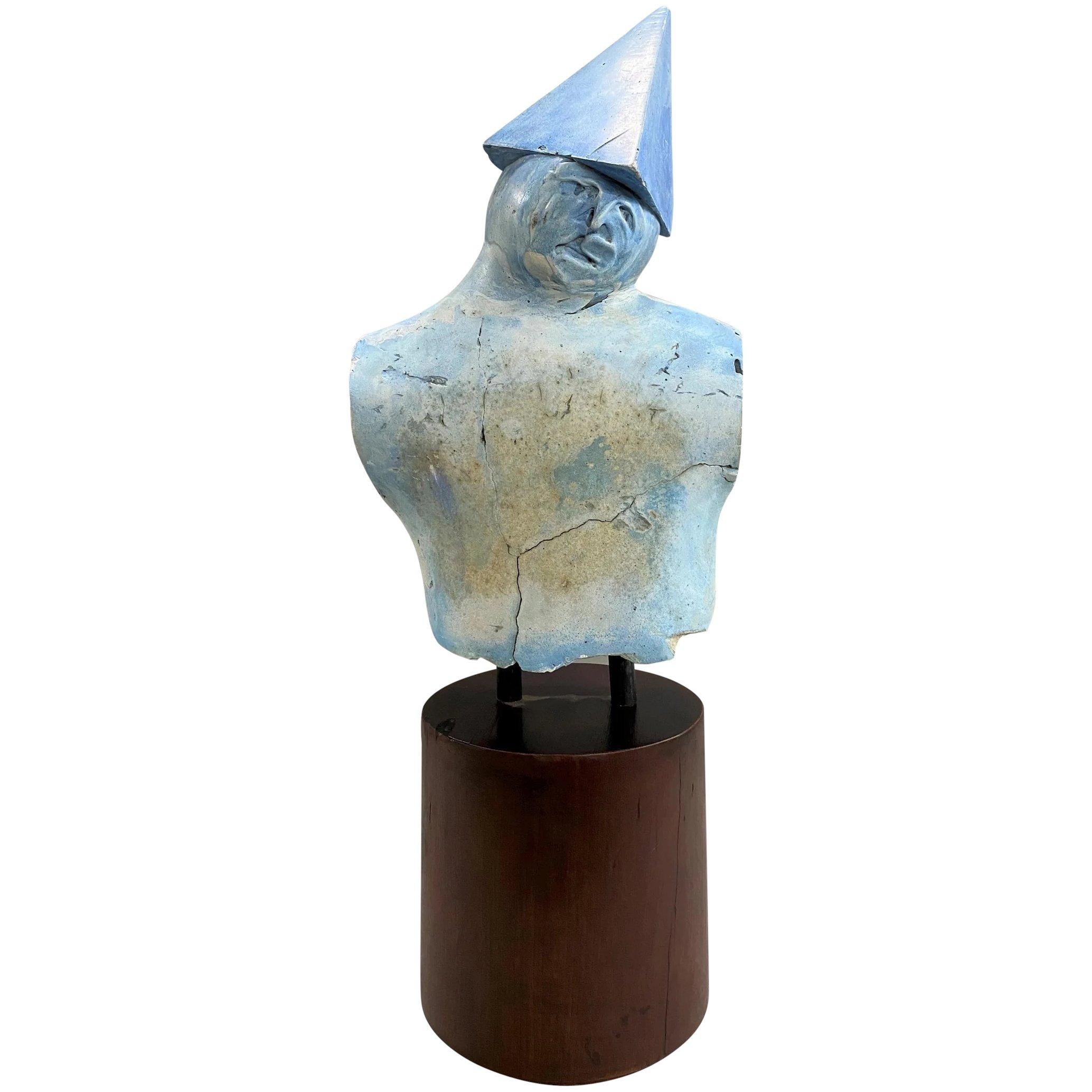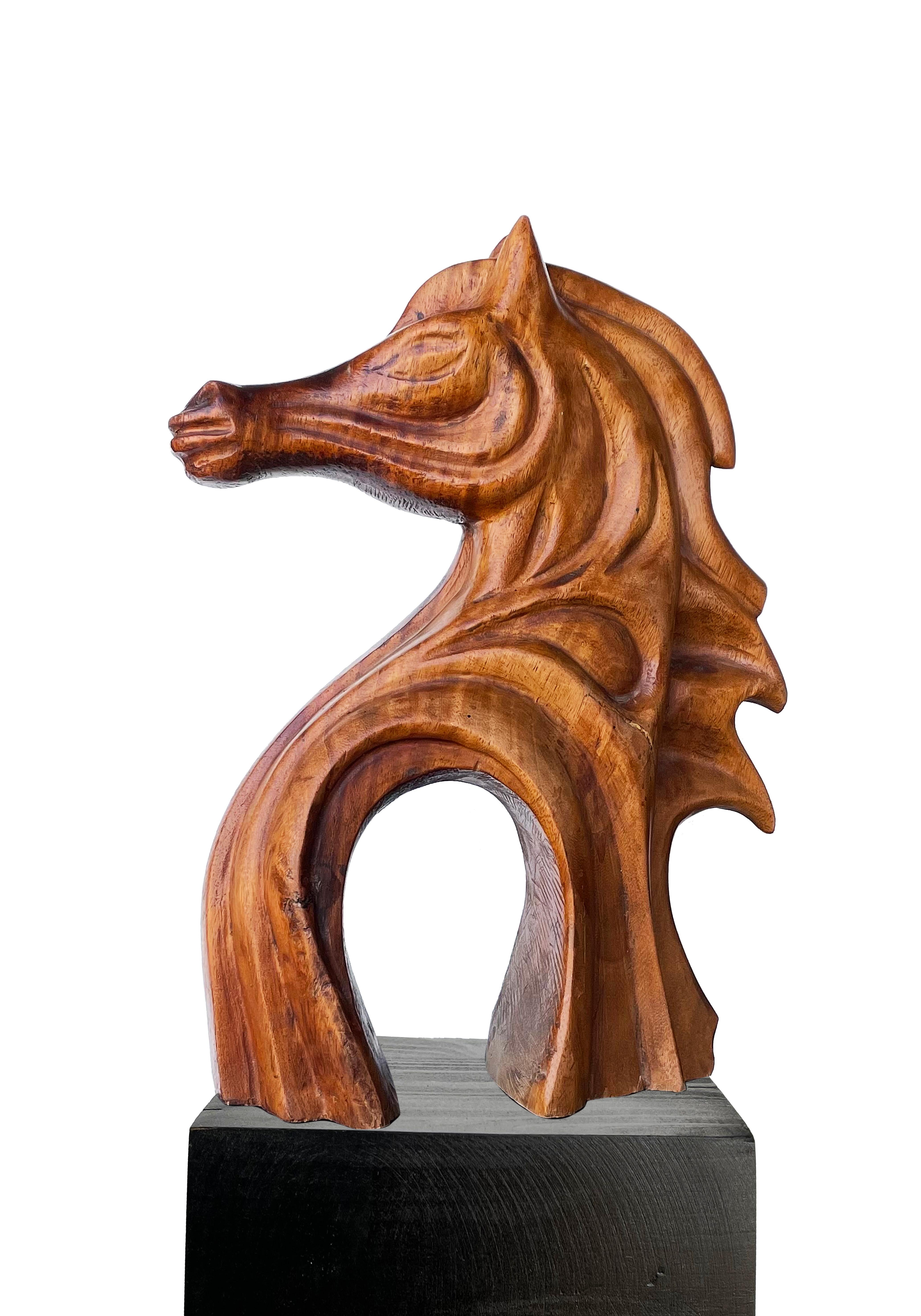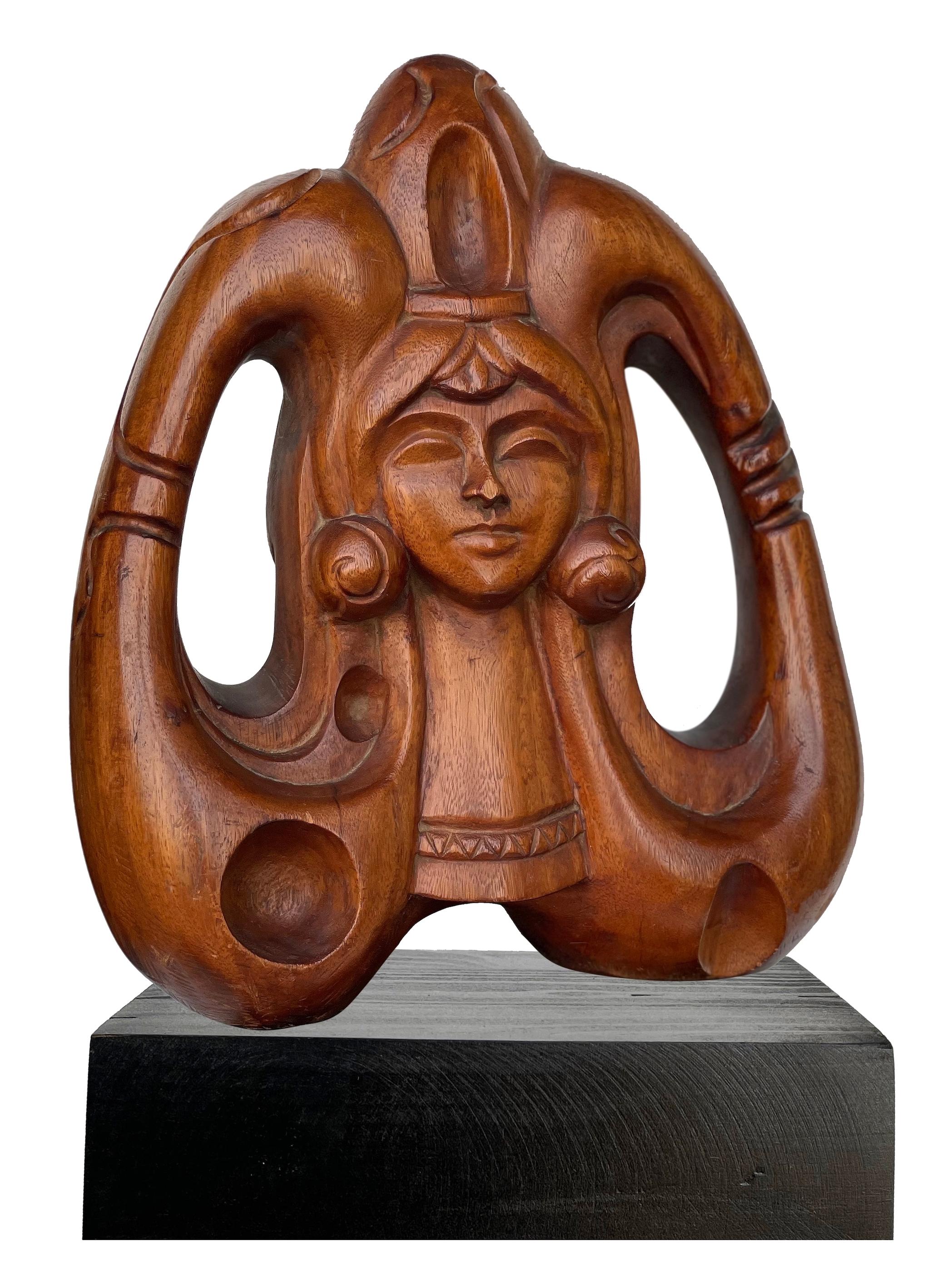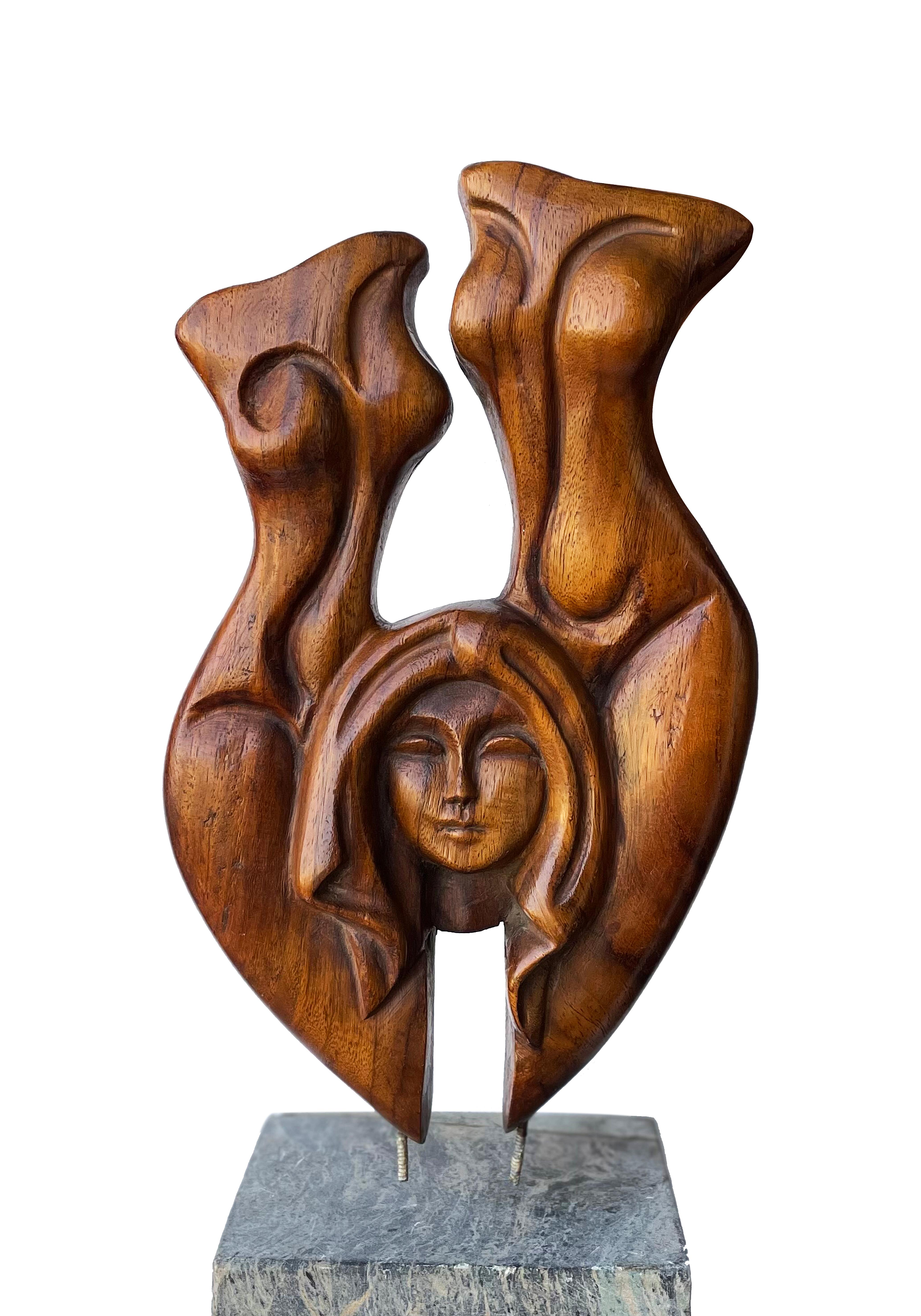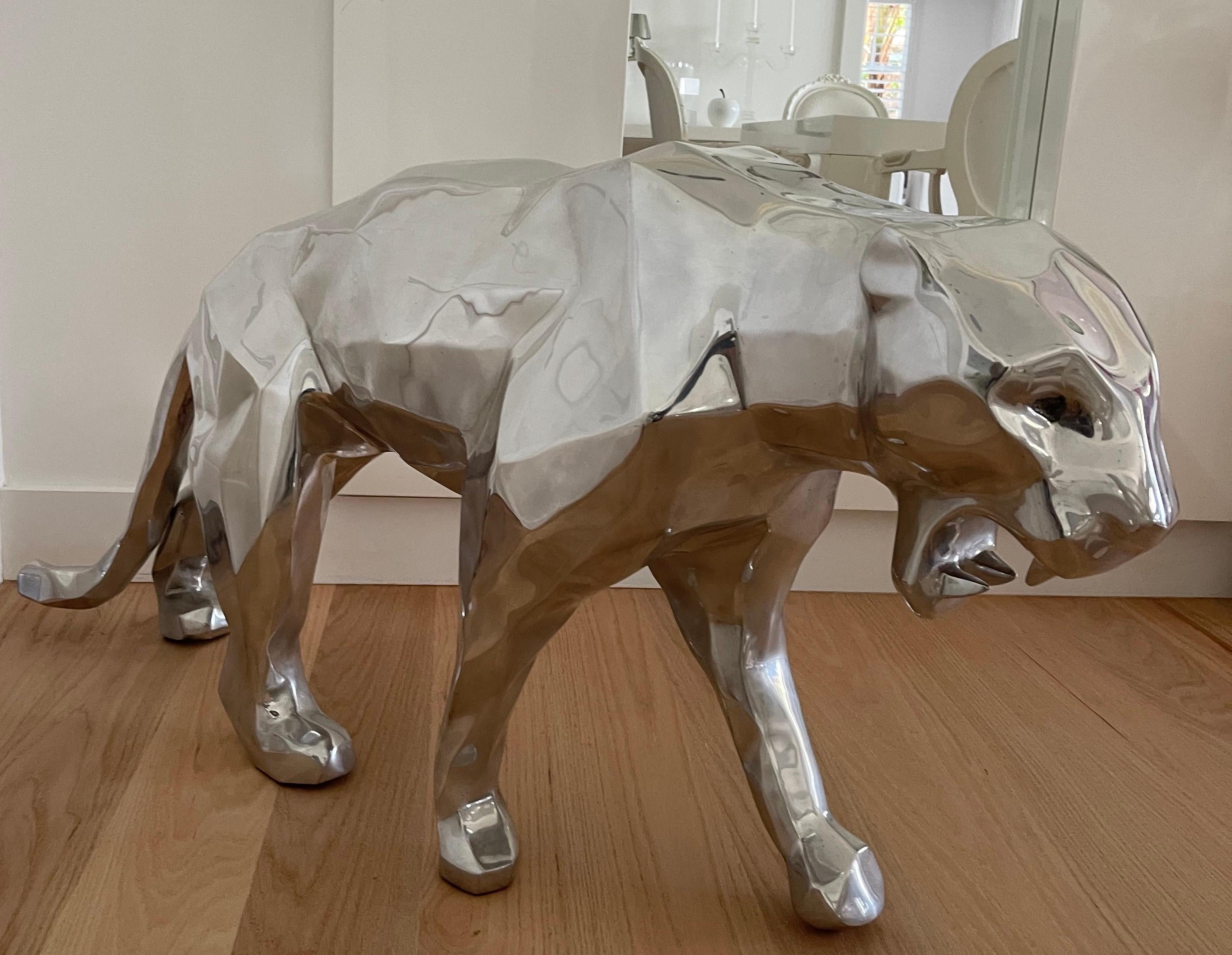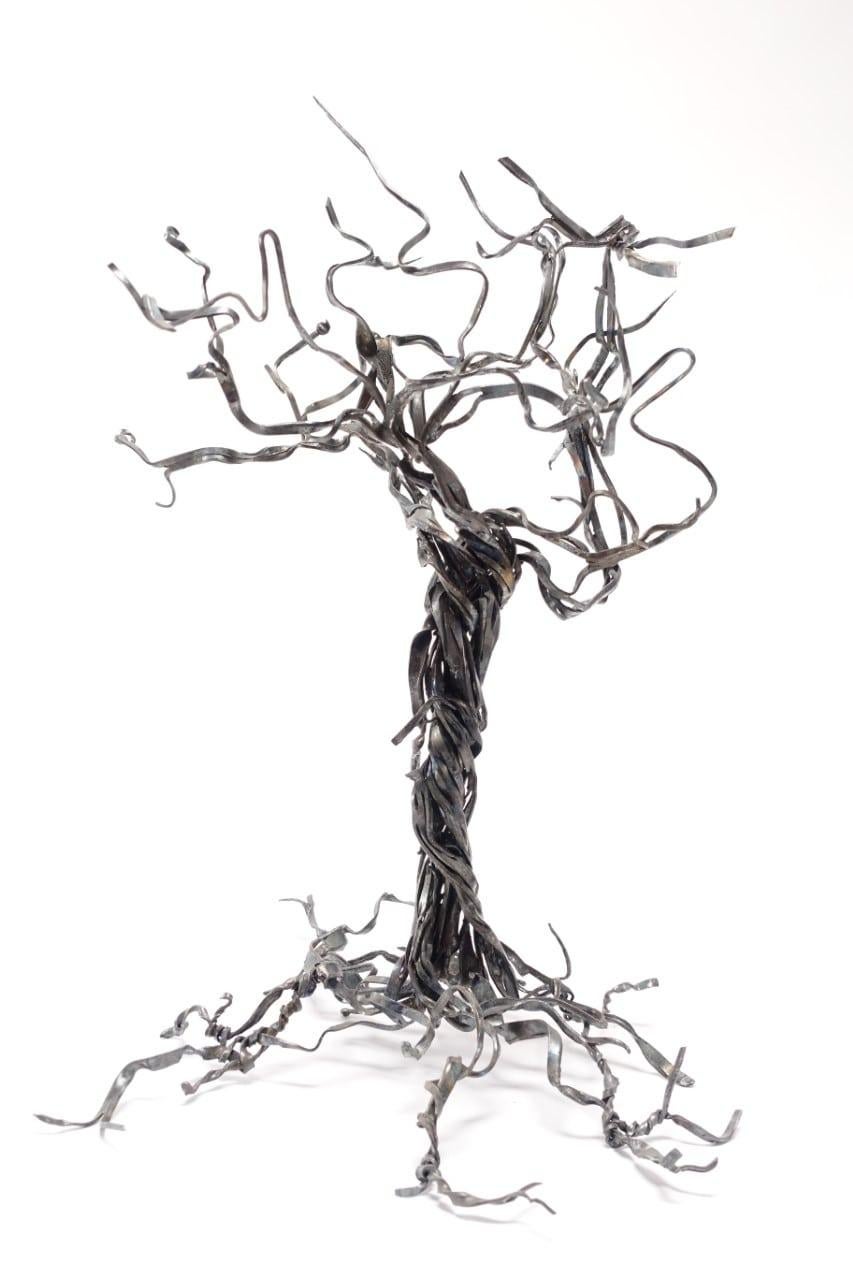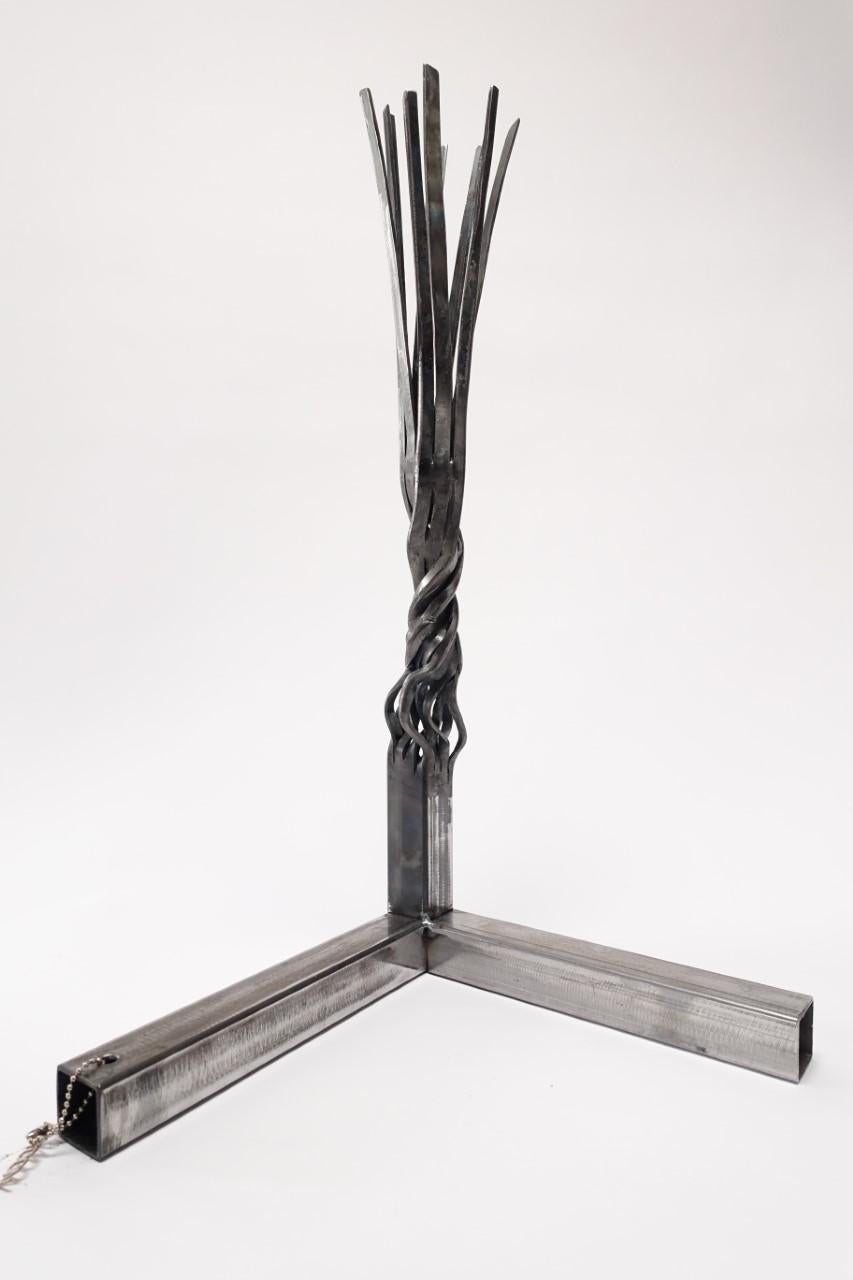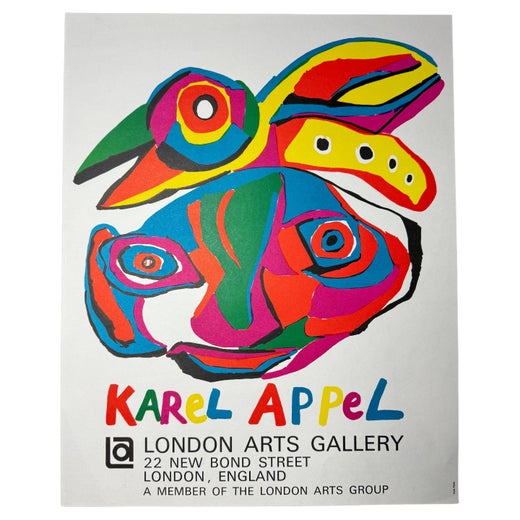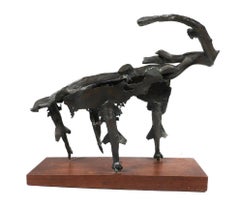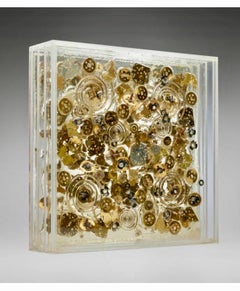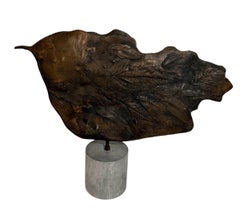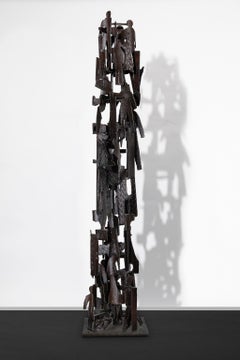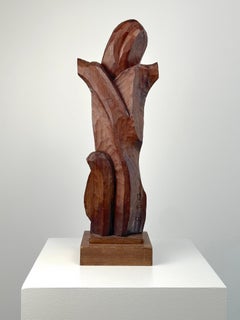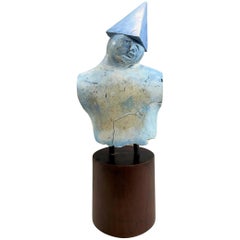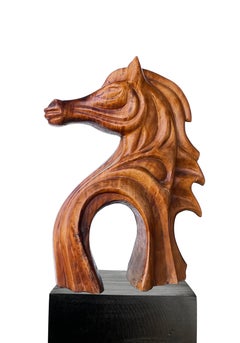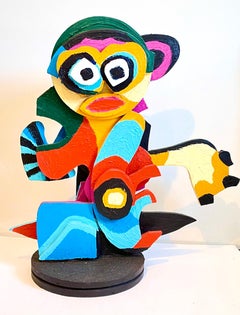
Karel Appel Colorful Expressionist Hand Painted Wood Cobra Sculpture Pop Art
View Similar Items
Want more images or videos?
Request additional images or videos from the seller
1 of 9
Karel AppelKarel Appel Colorful Expressionist Hand Painted Wood Cobra Sculpture Pop Art1977
1977
About the Item
- Creator:Karel Appel (1921 - 2006, Dutch)
- Creation Year:1977
- Dimensions:Height: 30.5 in (77.47 cm)Width: 28 in (71.12 cm)Depth: 14 in (35.56 cm)
- Medium:
- Movement & Style:
- Period:
- Condition:good. minor wear.
- Gallery Location:Surfside, FL
- Reference Number:1stDibs: LU3826647402
Karel Appel
Karel Appel was a founding member of COBRA, an art movement originating in Germany that strived to replicate and invoke the child’s approach to art. Within this movement he created abstracted and simplified figures, often monsters and fractured depictions of people.
About the Seller
4.9
Platinum Seller
Premium sellers with a 4.7+ rating and 24-hour response times
Established in 1995
1stDibs seller since 2014
1,745 sales on 1stDibs
Typical response time: 2 hours
Authenticity Guarantee
In the unlikely event there’s an issue with an item’s authenticity, contact us within 1 year for a full refund. DetailsMoney-Back Guarantee
If your item is not as described, is damaged in transit, or does not arrive, contact us within 7 days for a full refund. Details24-Hour Cancellation
You have a 24-hour grace period in which to reconsider your purchase, with no questions asked.Vetted Professional Sellers
Our world-class sellers must adhere to strict standards for service and quality, maintaining the integrity of our listings.Price-Match Guarantee
If you find that a seller listed the same item for a lower price elsewhere, we’ll match it.Trusted Global Delivery
Our best-in-class carrier network provides specialized shipping options worldwide, including custom delivery.More From This Seller
View AllKarel Appel Colorful Expressionist Hand Painted Wood Cobra Sculpture Pop Art
By Karel Appel
Located in Surfside, FL
This is an original wooden sculpture with hand painting on both sides. it does not appear to be signed or numbered and does not currently have any label. I believe this might be the ...
Category
1970s Abstract Expressionist Abstract Sculptures
Materials
Wood, Paint
Bronze Sculpture Abstract Brutalist Goat or Ram WPA Artist Mounted on Base
By Benedict Michael Tatti
Located in Surfside, FL
Benedict Tatti (1917-1993) worked in New York city as a sculptor, painter, educator, and video artist. He studied stone and wood carving under Louis Slobodkin at the Roerich Museum. He later attended the Leonardo da Vinci School of Art studying under Attilio Piccirelli. In l939 he taught adult classes with the Teachers Project of the WPA and attended the Art Students League for three and a half years on full scholarship. He studied under William Zorach and Ossip Zadkine and later became Zorach’s assistant. Later in his career, he attended the Hans Hofmann School of Fine Arts. During World War II, Tatti served in the United States Army Air Force, where he spent three years assigned to variety of projects. In 1948, Benedict Tatti married Adele Rosenberg in New York City.
Throughout his career, Tatti continuously experimented with various media. From 1952-1963, Tatti executed sculptural models of architectural and consumer products for the industrial designers, Raymond Loewy Associates; later he became a color consultant for the firm. In the 1960s, influenced by the Abstract Expressionists, Tatti turned from carving directly in wood and stone to creating assemblage architecture sculptures, using bronze metal and other industrial materials.
He was included in the important show "Aspects de la Sculpture Americaine", at Galerie Claude Bernard Paris, France, in October 1960 along with Ibram Lassaw, Theodore Roszak, David Smith, Louise Bourgeois, Danese Corey, Dorothy Dehner, Lin Emery, Lily Ente, David Hayes, Louise Nevelson, Tony Rosenthal, Richard Stankiewicz, Sam Szafran...
Category
Mid-20th Century Abstract Expressionist Abstract Sculptures
Materials
Bronze
French Pop Art Assemblage Sculpture Watch Movements Temps 2 Arman Accumulation
By Arman
Located in Surfside, FL
Arman
Temps 2 (Mecanismes de montres)
1976
Accumulation of watch parts on three sheets of Plexiglas, encased in a box
Dimensions: 18.125 h × 18.125 w × 4.375 d in (46 × 46 × 11 cm)
H...
Category
1970s Abstract Figurative Sculptures
Materials
Metal
Large Latin American Modernist Bronze Abstract Cuban Master Roberto Estopinan
By Roberto Estopiñan
Located in Surfside, FL
Roberto Estopinan, Cuban, 1920 - 2015
Dimensions: 24.5" wide x 13" high plus 6" high base.
Roberto Estopiñán (1921–2015) was a Cuban American sculptor known for his sculptures of the human form, including political prisoners. Born in Camaguey, Cuba, he lived in the United States for over fifty years. His works are held by major institutions such as the Museum of Modern Art, the Whitney Museum and the Smithsonian Museum of American Art.
Roberto Gabriel Estopinan, a sculptor, draftsman, and printmaker, was born in Havana, Cuba on March 18, 1921. Estopiñán enrolled at the San Alejandro Academy when he was just 14 years old and became the protegé and studio assistant of the sculptor Juan José Sicre. After graduation he traveled first to Mexico, where he met and befriended Francisco Zuniga, and studied Pre-Columbian sculpture. In 1949 he traveled to Europe, visiting England, France and Italy. In these trips he encountered the sculpture of Henry Moore and Marino Marini, and their humanistic yet formal visions would be influential on Estopinan's work. Estopiñán was a pioneer of direct carvings using wood and of welding techniques in Latin America. Throughout the 1950s, Estopiñán received important prizes at various national exhibitions in Havana. In 1953 he was the only semi-finalist from Latin America at the Tate Gallery's international sculpture competition for a Monument to the Unknown Political Prisoner. In 1961, the artist moved to New York, where he resided until 2002.
Roberto Gabriel Estopiñán a Cuban emigre sculptor who emigrated to exile in the United States not long after Fidel Castro’s revolution in 1959, is considered one of Latin America’s most important 20th-century artists. His work, which includes drawings and prints as well as sculptures in wood and bronze, is in the collections of New York’s Museum of Modern Art, the Smithsonian’s American Art Museum, the Art Institute of Chicago, and the Detroit Institute of Art, among many locations. He is best known for his stark, disturbing renderings of political prisoners, the fruit of his own experiences as a dissident under both Castro and his predecessor, the dictator Fulgencio Batista, and for his representations of the female torso that can remind viewers of both classical statuary and the high-modern, abstractly elongated work of Henry Moore.mHe was born in Havana to a father from Asturias in northwest Spain and a mother of African descent. Estopiñán was something of a prodigy. At the age of fourteen, he won the first prize in drawing at the Centro Asturiano, a regional association for Cubans of Asturian descent. Shortly afterward he received special permission to enter the San Alejandro Academy of Fine Arts in Havana. At the school he was mentored first by its director, the painter Armando Menocal (1863-1941), then by the landscape artist Antonio Rodríguez Morey (1872-1967), and finally by Juan José Sicre (1898-1974), regarded as one of Cuba’s greatest sculptors. Sicre, a professor of sculpture at the Academy, had helped introduce European modernist art to Cuba, and from the 1930s through the 1950s had sculpted monumental figures in Havana of José Martí and other Cuban national heroes that stand to this day. Estopiñán was first Sicre’s student, then his assistant, and, finally, his colleague for the next fifty years. After graduating from San Alejandro in 1942, Estopiñán began simultaneously teaching art at the Ceiba del Agua School for young men, assisting Sicre in public art projects and developing his own artistic vision. He also traveled widely, to Mexico, New York, France, and Italy. From the late 1940s through the 1950s his sculpture evolved from an early neoclassical phase under the influence of Maillol to what he defined as “formalist humanism”: emphasizing the abstract beauty of the shapes he sculpted while not abandoning the human figure as the basis of his work. As the 1950s progressed he chose to carve in native Cuban woods...
Category
20th Century Abstract Figurative Sculptures
Materials
Bronze
French Pop Art Heavy Bronze Sculpture Chess Game Gambit Arman Accumulation
By Arman
Located in Surfside, FL
Arman, French American (1928-2005)
Gambit (Chess pieces)
Cast Bronze Sculpture with patina
Incised signature near lower edge, 48/70 with
impressed "Bronze Romain & Fils" foundry ma...
Category
Early 2000s Abstract Figurative Sculptures
Materials
Bronze
Blas Castagna Hand Painted Wooden Constructivist Sculpture Toy Horse Carved Wood
Located in Surfside, FL
Blas Alfredo Castagna was born in Buenos Aires, Argentina in 1935. He studied at the Manuel Belgrano National School of Fine Arts and at the Prilidiano Pueyrredón School, where he obtained the title of National Professor of Drawing and Decorator Painter. In 1959 he traveled to Italy and in Sicily he attended the metal-beating workshop at the Scuola d´Arte di Comiso. A year later, he had a solo show of oil painting and gouaches at the “Alcora” Gallery in Buenos Aires, also presenting it in the province of San Juan. In addition to his artistic activity, he worked between 1974 and 1976 as a teacher in the Department of Plastic Arts, Faculty of Humanities, of the National University of San Juan. In 1982 he was invited to exhibit plates and monotypes at the Galerie de L´Université - Tour Mauran in Toulouse, France. A year later he exhibited in our country at the Van Riel Gallery, where a long connection with this room begins. In 1998 he exhibited again in Toulouse, at the Espace Croix Baragnon, an exhibition entitled "Origins, Mémoide", also presenting that year, at the Enrique Larreta Museum of Spanish Art in Buenos Aires, his "Obra Figurativa 1973-1993". Collectively, he presents his works in Uruguay, Cuba, Spain, at the Museum of Modern Art in Buenos Aires and at the National Museum of Fine Arts, at the Borges Cultural Center (2007 and 2008), at the Museum of Modern Art in Bahia ( Brazil, 2005), at the Sainsbury Center Norwich (United Kingdom, 2004), Centro Cultural Recoleta (1999), at the Fortabat Foundation (1985), at the II Biennial of Havana (1986) and at the ARCO fair in Madrid ( 1987). In 1990 he was awarded the Spirit of Greece Award for engraving, and in 1992 the “Konex Platinum Award. His work is influenced by the Latin American geometric constructivism present in Argentina and Uruguay as well as the European influences of Surrealism and Dada Art.
He showed at the prestigious van Riel Gallery. For over 80 years the Frans van Riel Gallery has exhibited at the forefront of Argentinean art. Beginning with Alfredo Hlito “Grupo de Artistas Modernos de la Argentina” (Argentinian Modern Artists). The avant-garde of the 1950s and the work of Kenneth Kemble, Leónidas Gambartes and the Grupo Litoral, Juan Del Prete, Aldo Paparella sculpture, Julio Llinás, Aldo Pellegrini, Juan Batlle Planas, Libero Badii, Malena Babino, Horacio Butler, Alejandro Corujeira, Juan Del Prete, Kirin, Luis Felipe Noé...
Category
20th Century Neo-Constructivist Figurative Sculptures
Materials
Fabric, Wood, Paint
You May Also Like
UNTITLED, Abstract/Figurative, Black Welded Steel, Cass Corridor Artist, Detroit
Located in Detroit, MI
SALE ONE WEEK ONLY
The "Untitled" abstract sculpture by Robert Sestok has a very deliberate aura of strength in its columnar shape. It does become more ...
Category
21st Century and Contemporary Abstract Expressionist Abstract Sculptures
Materials
Steel
Abstract Figure
By Raul Diaz
Located in Wilton Manors, FL
Raul Diaz (Argentina, b.1950). Abstract Figure, ca. 1970s. Canved Walnut. Measures 17 inches tall including wood base. Carved signature in lower region. Excellent condition.
An ear...
Category
1970s Abstract Expressionist Abstract Sculptures
Materials
Walnut
$1,200
Figure with Hat
By Varujan Boghosian
Located in Milford, NH
A fine abstract polychromed plaster bust of a figure with hat by American artist Varujan Boghosian (1926-2020). Boghosian was born in New Britain, CT and after serving in the United ...
Category
Mid-20th Century Abstract Expressionist Figurative Sculptures
Materials
Metal
"Grecian Stallion II" Sculpture 19" x 9" inch by Ibrahim Abd Elmalak
Located in Culver City, CA
"Grecian Stallion II" Sculpture 19" x 9" inch by Ibrahim Abd Elmalak
Wood
Signed & Dated
Sculptures that mostly depict his characteristic figures of feminine form and feeling – a ...
Category
21st Century and Contemporary Abstract Expressionist Figurative Sculptures
Materials
Wood
"Flower Maiden" Wood Sculpture 17" x 11" in by Ibrahim Abd Elmalak
Located in Culver City, CA
"Flower Maiden" Wood Sculpture 17" x 11" in by Ibrahim Abd Elmalak
Sculptures that mostly depict his characteristic figures of feminine form and feeling – a central element to Abd E...
Category
21st Century and Contemporary Abstract Expressionist Figurative Sculptures
Materials
Wood
1980 Italy Wood Abstract Kinetic Sculpture
By Bruno Chersicla
Located in Brescia, IT
This sculpture is one of a kind piece, no other one exists, and it was realized in 1980 by the well known Italian artist Bruno Chersicla.
This is a kinetic abstract sculpture, most ...
Category
1980s Abstract Expressionist Figurative Sculptures
Materials
Wood
